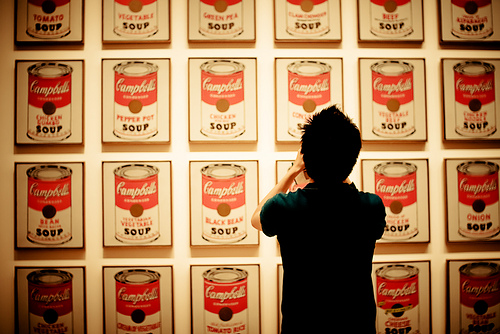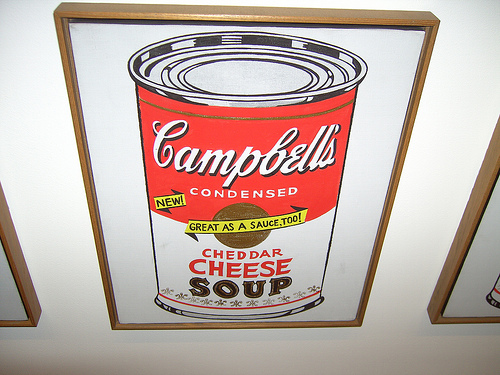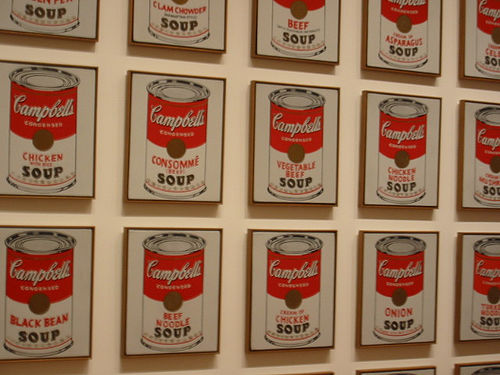
In the entertainment industry artists have residuals. They are payments to the band, recording artist, songwriter, TV actor or producer of a song, movie or TV show. When the song continues to get airplay or the TV show has its umpteenth rerun these creators of the work get paid. Licensing deals for merchandise or use of songs or someones image by marketing bring in more cash. This allowed Elvis Presley to earn 52 million in 2008. Albert Einstein’s estate made $18 million from licensing for the Baby Einstein toys brand and, believe it or not, a Nestle Coffee brand in Japan. Dr. Seuss earned $12 million from book sales & movie deals and Andy Warhol stretches his 15 minutes to beyond the grave with licensing deals worth $9 million. These earnings are all a result of copyright, personality rights(ie pay to use James Dean’s image in your advertising) and continued sales and airplay. Patents can also continue to bring in cash long after the invention has been made. Some product designers are also increasingly getting into the royalty game charging between 3-5% on future revenues from their designs.
Over the coming years residuals are no longer going to be a thing that only expensive lawyers as well as superstars and their grieving relatives will think about. As more and more people design, as more products become niche, as more designers & other artists become brands out of their own bedroom the number of people collecting residuals will increase.
Indeed right now if you have a design in your Shapeways Shop you can earn residuals off of the sale of the products from that design. The initial design effort could have been done months ago but you could still earn money based on that design, again and again every time someone orders a product.

As companies similar to Shapeways come to the fore more people like you will be created the world over. Not only in 3D modeling but also in furniture design, 2D design of any kind, movie making, acting, writing, engineering, invention etc. The democratization of production(of any kind) will be a leitmotiv for the coming years.
As more consumers are exposed to more products of all kinds more demand for diversity in any and all products will ensue. More choice in books leads to more demand for individual choice in clothes, cars, furniture, anything.
More designers will be needed to design more things that suit more peoples diverging tastes. The world will be replete with people who are “a brand in their bedroom.” Over the past years it has become possible to as one person through technology to make a feature film, produce a song, write a computer game, become a retailer via eBay, and so on. These advances plus the concept of the long tail mean that more people will design more stuff in areas that are now traditionally catered to by companies rather than individuals.
Just because everyone can make their own movies though doesn’t mean that everyone will be successful. Everyone could start a blog but only a precious few have found readers and a much smaller percentage can make a living from their readership. Talent, effort & marketing skills will matter.

So we will have a world of millions of brands:
- The long tail & more choice in one product brings about more demand for choice in other products.
- The Platforms (such as Shapeways, eBay etc.)
- The technology (video camera’s, inexpensive 3D modeling tools etc.)
- The “brands of one”
- The Internet (making it all possible)
- and residuals
With all those game changing themes why did I single out residuals for this blog post? Residuals, or the idea that you earn money from your creation after the fact, is quite simply the least mature of these things.
With exceptional talent you can right now become a brand of one and make a living from your own bedroom in your own niche. But, how can you protect your work? How can you establish that a design is ‘yours.’ How can you guard your innovation, your creativity, your work? Currently this is simply not possible.
The internet is the glue that binds these series of innovations
together but it is also a place where content is easily copied. This is
part of its usefulness but also exposes talented people to the threat
of misappropriation of their work, especially when they are just
starting out. The battle between the extremes of “all content wants to be free” and “protect IP at all costs” will continue to rage.
Copyright-, trademark- and patent law are all hopelessly behind the times. Worse still, the changes that have been made skew the entire process of protecting your intellectual property towards large companies. Everything from securing IP to protecting it is hugely expensive.

And yet..residuals are key. They allow you to get revenue from your entire body of your work, over time. Protecting these assets and exploiting them continually will be the key for talented people to make money consistently from their designs. The ability to earn from the ‘catalog’ of your work will be of paramount importance. It means that in a widely distributed world where information is instant you can continue to sell years later in the tiniest of niches.
Without the proper safeguarding of residuals being in place: every song, design or performance will be a struggle. Without the proper safeguarding of residuals being in place: poaching a design will be more profitable than making one. Without the proper safeguarding residuals being in place: a long tail world of ‘brands of one’ will quite simply not work. The returns would be too uneven, the right guys simply would not win.
So why did I write this post? I wrote it to inspire a lawyer. I’d like a lawyer to read, this admittedly long winded mess, and start a company. I’d like that company to provide a service similar to the Artists Rights Society but for every designer, large or small. I’d like it to be a RIAA that understands the internet and respects that we live in a changing world where sometimes monopolies lose, where sometimes business models get broken and that the right course is then to innovate, not to haplessly sue while hopelessly clinging to memories of a bygone era.
I usually don’t like to make predictions. But..I know that such a company, if executed well, would make millions. IP rights is a high margin, high service, business for the happy few. No one is trying to democratize it, make it more accessible, make it scale. If you were the first to do this in scale you would have a profitable high barriers to entry global business.
So, if you are an IP lawyer and managed to get through this post, congratulations. You have just been made aware of a huge business opportunity. I hope you do it. To get you started I’ve taken the liberty of registering carefreeip.com. I hope you like it. If you start up the business described, the domain is a gift to you from me. Good luck.

If you are not an IP lawyer, please send this post to someone who is. Or you might want to just pitch this idea to them. If you are at all interested in personal fabrication, 3D printing, mass customization etc. it is crucial that such a business be created. If you can, please try to motivate someone you know to start it.
After all as Warhol said, “In the future, everyone will be world-famous for 15 minutes.” And everyone won’t all be able to make their way to the offices of Fancy, Fancier & Fancy-est esq. on Park Avenue.
Photo’s used under Creative Commons, Share, Remix, attribution license:



The human in me agrees. Help me protect my designs. And make me money.
The humanitarian in me sees that everything needs to be open for the betterment of design, society, and the future existence of humanity.
Like you said, the way it is now it benefits the big business. But as long as big business runs our governments that’s the way it will stay.
Great read, thanks 🙂
To me IP means “Internet Protocol”. I couldn’t seem to find what it means in this article.
ah … Intellectual Property, duh.